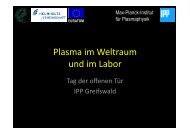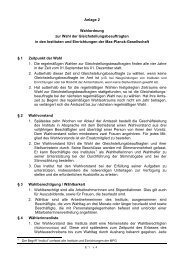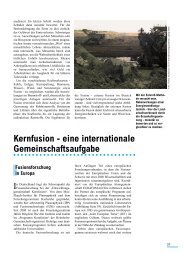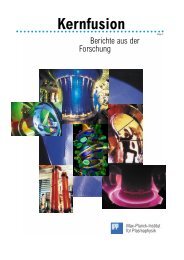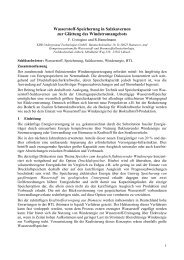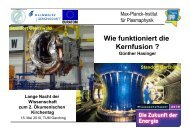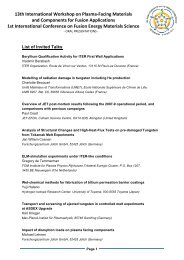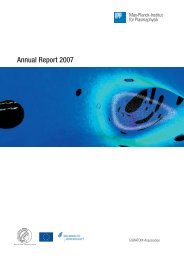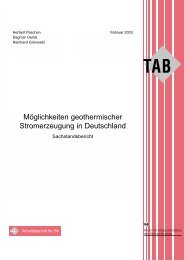Wendelstein 7-X and fusion - Max-Planck-Institut für Plasmaphysik
Wendelstein 7-X and fusion - Max-Planck-Institut für Plasmaphysik
Wendelstein 7-X and fusion - Max-Planck-Institut für Plasmaphysik
Create successful ePaper yourself
Turn your PDF publications into a flip-book with our unique Google optimized e-Paper software.
16<br />
Axial High Voltage Divider<br />
“Powerful discharges safely buffered”<br />
Facts:<br />
Research institutes:<br />
Karlsruhe <strong>Institut</strong>e for Technology<br />
Industrial partner:<br />
Babcock Noell GmbH (BNG)<br />
(Würzburg, Germany)<br />
Contracts:<br />
Qualified 5 kV divider after successful<br />
high-voltage <strong>and</strong> material testing<br />
Development of a high-voltage divider for ITER<br />
Babcock Noell GmbH, Würzburg, Germany<br />
The superconducting magnets, which produce the necessary magnetic field for the plasma<br />
confinement in a <strong>fusion</strong> reactor, are cooled to cryogenic temperatures with liquid helium.<br />
The helium flows through metal pipes to the magnets, which are held at high voltage.<br />
In the case of an emergency shutdown, the magnets can generate voltages of up to more<br />
than 10,000 Volt. Therefore, a high-voltage divider must be installed between the metal<br />
feed lines <strong>and</strong> the pipe system.<br />
The high-voltage divider must ensure that the helium lines inside the magnets are electrically<br />
insulated. It has to prevent leaks <strong>and</strong> arcs, which may occur in the event of discharges<br />
<strong>and</strong> arcs inside the magnet, <strong>and</strong> thus help to maintain the necessary helium cooling for<br />
the magnets.<br />
Babcock Noell can now manufacture dividers for different temperature ranges in largescale<br />
production. The efficiency of these dividers has been proven by the Karlsruhe <strong>Institut</strong>e<br />
(KIT) with qualified high-voltage <strong>and</strong> materials tests. The prototypes withstood -196 °C,<br />
70 kV <strong>and</strong> 60,000 cycles undamaged <strong>and</strong> were leak-free. They are thus qualified for ITER.<br />
Babcock Noell can thus provide dividers which set new st<strong>and</strong>ards with regard to vacuum-tightness,<br />
mechanical robustness <strong>and</strong> high-voltage resistance.<br />
These specifications will help to market the dividers not only in the field of <strong>fusion</strong> but<br />
also for the GSI/FAIR project.




